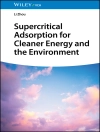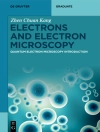The Lifted Veil George Eliot – The Lifted Veil is a novella by George Eliot, first published in 1859. Quite unlike the realistic fiction for which Eliot is best known, The Lifted Veil explores themes of extrasensory perception, the essence of physical life, possible life after death, and the power of fate. The novella is a significant part of the Victorian tradition of horror fiction, which includes such other examples as Robert Louis Stevenson’s The Strange Case of Dr. Jekyll and Mr. Hyde (1886), and Bram Stoker’s Dracula (1897).
Mengenai Pengarang
Mary Ann Evans, known by her pen name George Eliot, was an English novelist, poet, journalist, translator and one of the leading writers of the Victorian era. She was born in 1819 at a farmstead in Nuneaton, Warwickshire, England, where her father was estate manager. Mary Ann, the youngest child and a favorite of her father’s, received a good education for a young woman of her day. Influenced by a favorite governess, she became a religious evangelical as an adolescent.Her first published work was a religious poem. Through a family friend, she was exposed to Charles Hennell’s ‘An Inquiry into the Origins of Christianity’. Unable to believe, she conscientiously gave up religion and stopped attending church. Her father shunned her, sending the broken-hearted young dependent to live with a sister until she promised to reexamine her feelings. Her intellectual views did not, however, change. She translated ‘Das Leben Jesu’, a monumental task, without signing her name to the 1846 work.After her father’s death in 1849, Mary Ann traveled, then accepted an unpaid position with The Westminster Review. Despite a heavy workload, she translated ‘The Essence of Christianity’, the only book ever published under her real name. That year, the shy, respectable writer scandalized British society by sending notices to friends announcing she had entered a free ‘union’ with George Henry Lewes, editor of The Leader, who was unable to divorce his first wife. They lived harmoniously together for the next 24 years, but suffered social ostracism and financial hardship. She became salaried and began writing essays and reviews for The Westminster Review.Renaming herself ‘Marian’ in private life and adopting the penname ‘George Eliot, ‘ she began her impressive fiction career, including: ‘Adam Bede’ (1859), ‘The Mill on the Floss’ (1860), ‘Silas Marner’ (1861), ‘Romola’ (1863), and ‘Middlemarch’ (1871). Themes included her humanist vision and strong heroines. Her poem, ‘O May I Join the Choir Invisible’ expressed her views about non supernatural immortality: ‘O may I join the choir invisible/ Of those immortal dead who live again/ In minds made better by their presence.












